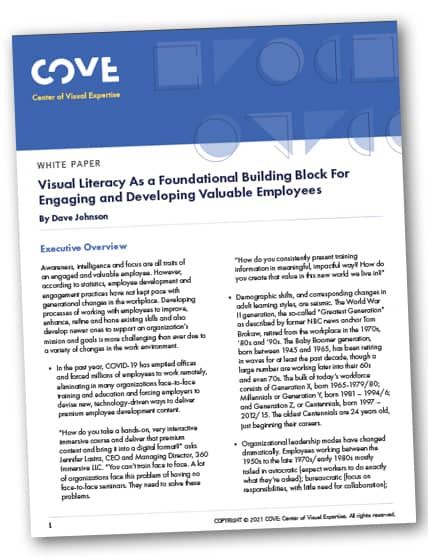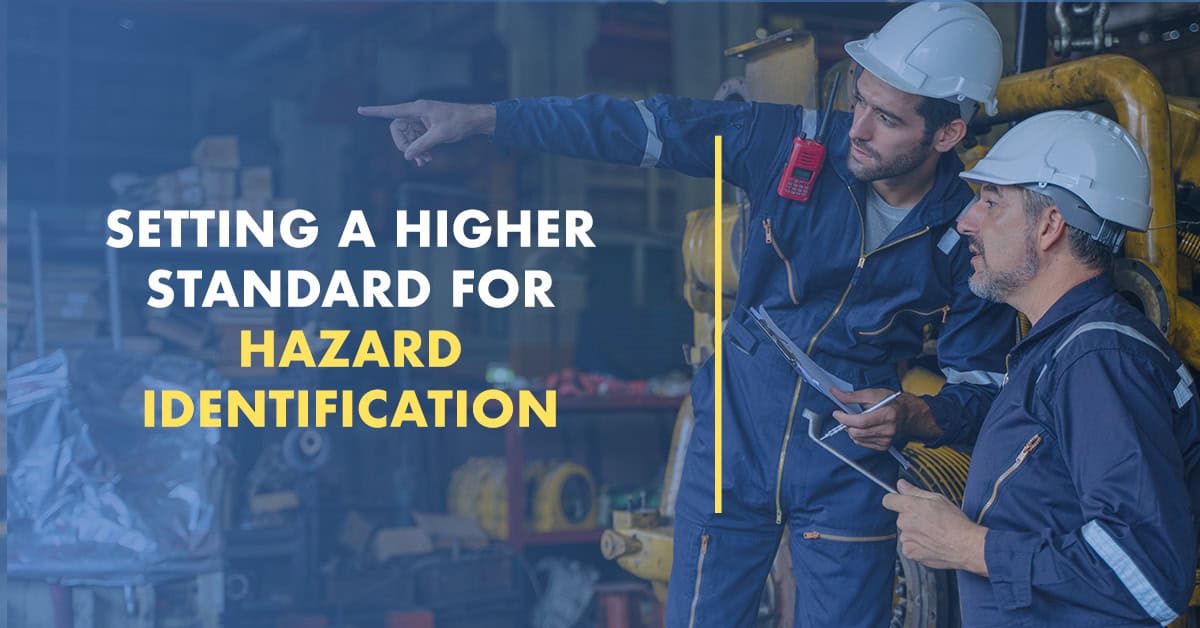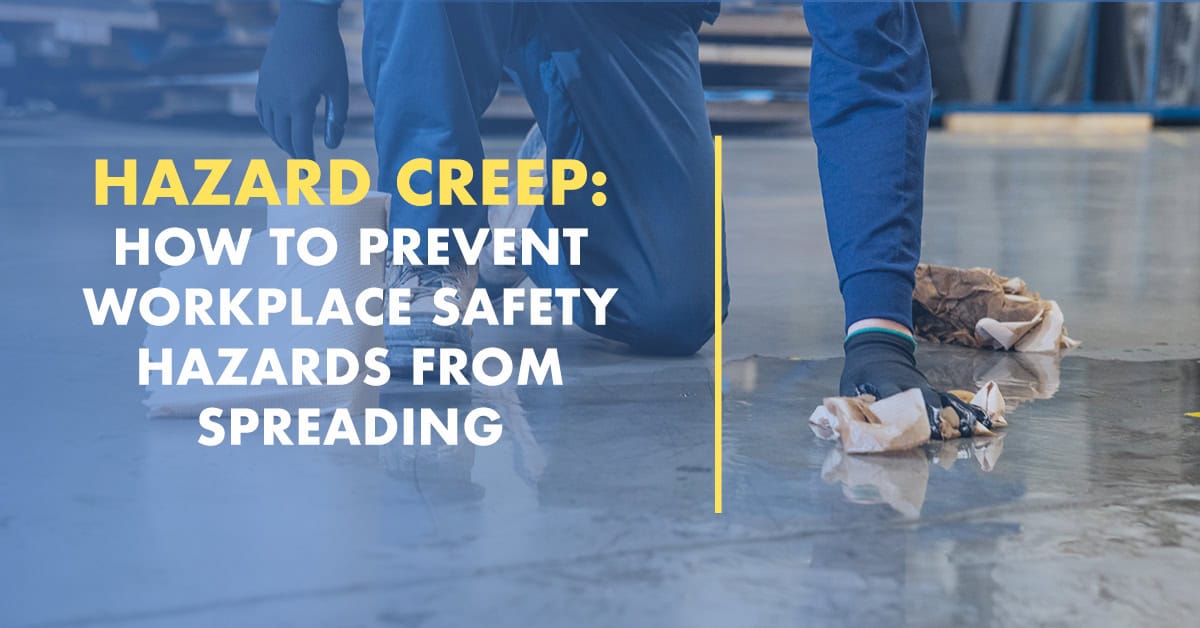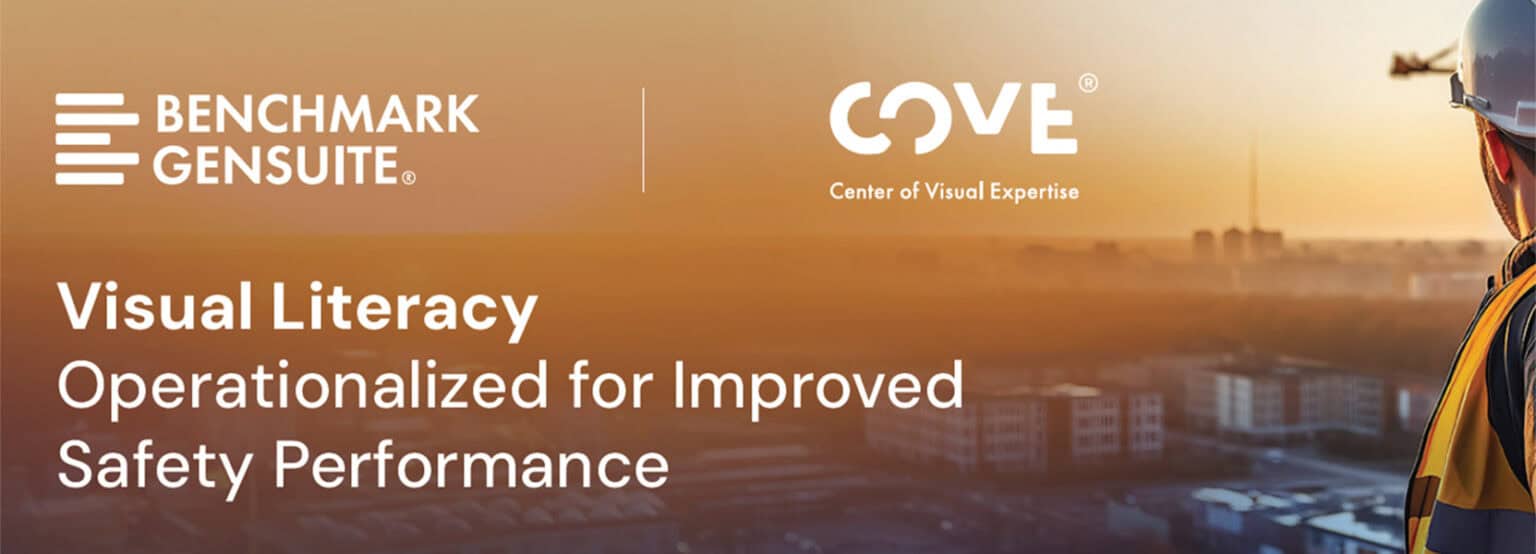Here are eight skills, according to Glassdoor.com, an online employment service, that employers seek in employees. These skills enable employees to be more engaged in their work – and they are skills that employers can build on through learning and development courses:
- Confidence
- Willingness to listen and learn
- Adaptability
- Flexibility
- Self-reliance
- Teamwork
- Dependability
- Honesty
“Visual Literacy As A Foundational Building Block For Engaging And Developing Valuable Employees,” a white paper recently published, explains how Visual Literacy, a “foundational element” missing from traditional employee development, according to training expert Jennifer Lastra, CEO and Managing Director of 360 Immersive, can be used to build each of these desired skills. The result: employees who are more engaged on the job and possess well-rounded critical thinking skills.
Visual Literacy training conducted by COVE focuses on developing specific safety-related skills: hazard recognition, description of hazards, hazard analysis, hazard communication and problem-solving. Visual Literacy training is immersive, experiential, and interactive, even in these times of virtual training. Attendees appreciate the training, and its focus on enjoying the learning process, group dynamics, engaging exercises, and innovative instruction. Attendees connect to instructors, content, exercises, learning objectives, and to each other, even remotely. This is not your typical safety training. The skillset developed through the Visual Literacy methodology has applications far beyond recognizing hazards and keeping people safe on the job. It is a skillset for life, to be used on the job and in one’s personal life as well.
Let’s examine how Visual Literacy applies to each of the eight skills sought by employers:
Confidence: Most Visual Literacy training participants come to the course unaware of its novel approach: The Art of Seeing Art, which is based on art education to increase critical thinking, situational awareness and mindfulness to better deconstruct a work environment and see potential hazards. After training, participants are more confident in their ability be aware of their surroundings, how they interact with their work environment, and how this knowledge can lead to identifying problems (not just hazards), describing them, interpreting their meaning, and communicating informed details that lead to problem-solving.
Listening and learning: Being in tune with your surroundings, at work, on the road, or at home, is to be situationally aware. Constant learning comes from this awareness. Visual Literacy teaches participants the importance of slowing down, being connected to their environment, and builds the understanding that there is always something new to learn, to discover.
Adaptability: Hazard recognition is a safety practice that is portable; it can and must be applied to a variety of industries, work tasks and work environments. Employees trained in Visual Literacy learn to adapt critical thinking skills such as observation, interpretation, communication and problem-solving to whatever assignment is given.
Flexibility: Visual Literacy teaches us that our experiences, our expectations, and our biases influence what we see and how we interpret the world around us. By applying the tools and techniques associated with Visual Literacy, we learn to draw meaning from what we see more objectively. Application of these tools apply to any environment and encourages flexibility in our interpretations instead of having only one perspective.
Self-reliance: To be safe on the job, one often must rely on their own senses. Seldom is the safety officer present. Often a supervisor is not close by. And numerous jobs call for working solo: driving a delivery truck or long-haul trucking, utility line work, remote oil and gas field work, elevated work on a construction site. Visual Literacy training that creates mindfulness and situational awareness builds self-reliance.
Teamwork: Another aspect of workplace safety is collaboration. Numerous safety procedures call for teamwork, including hazard recognition audits or “hunts,” analyzing the causes of an accident, participating in a policy-making safety steering committee, gathering in pre-shift “huddles” to review work assignments and potential hazards, and in post-shift briefings to go over lessons learned. Visual Literacy training emphasizes participant interplay and interaction, listening and asking questions. It is an immersive exercise for participants that builds teamwork, trust, and respect for the opinions and judgments of peers.
Dependability: Workplace safety requires interdependence. A famous saying in safety is: “You are your brother’s and sister’s keeper.” Safety officers and supervisors cannot be everywhere, catching every hazard and preventing every injury. Employees depend on each other to be vigilant and speak up or intervene when danger is imminent. Visual Literacy exercises in identifying hazards build group cohesion and trust in the dependability of coworkers.
Honesty: Without honesty, a workplace safety program will never succeed. If injuries or near misses are not reported, injuries are hidden for fear of reprimand, incident investigations look only to blame the victim, and safety meetings are not honest exchanges about dangerous physical conditions and at-risk behaviors observed, for example, the safety program is a paper program not connected to reality. Visual Literacy teaches employees to be forthright and honest with each other; that it is “safe” to disagree on three key questions: What do you see? What does it mean? And what do you do about it? Employees accustomed to this honesty apply it in other areas of their work life. Managers depend on them to be honest-brokers.

We encourage you to read the white paper, Visual Literacy As A Foundational Building Block For Engaging And Developing Valuable Employees, for a more comprehensive explanation of Visual Literacy’s value to an organization.




